Your (usually) monthly fix on the current state of Android.
About once a month, Google releases distribution numbers that outline the various Android versions and the percentage of current devices they're running on. This data is meant for developers so they can create and update their apps according to which Android versions are the most popular, but they also give enthusiasts like us a glimpse into how quickly OEMs are adopting the latest and greatest the platform has to offer.
To source this data, Google tracks the Android versions of any devices accessing the Play Store over the course of a 7-day period. This ensures that only active Android gadgets are being accounted for and not your HTC Dream that's been sitting untouched in a drawer for the past few years.
Any version that accounts for 0.1% or more is listed, but versions that have less than that are ignored.
Without further ado, here's the current state of Android.
May 2018
The data for May corresponds to Play Store activity for the seven-day period ending on May 7. Oreo has picked up another percentage point over the course of the month, and is at 5.7% overall — 4.9% being 8.0 and the other 0.8% for 8.1.
Nougat also saw a slight increase from 30.8% to 31.1%, followed by Marshmallow by 25.5%. Here's the breakdown of how things changed:
- Gingerbread – No change
- Ice Cream Sandwich – No change
- Jelly Bean – 0.2% decrease
- KitKat – 0.2% decrease
- Lollipop – 0.5% decrease
- Marshmallow – 0.5% decrease
- Nougat – 0.3% increase
- Oreo – 1.1% increase
April 2018
For April of 2018, Google tracked Android devices accessing the Play Store for 7 days with the collection period ending on April 16.
The last report from February showed Oreo just barely accounting for more than 1% of Android devices, but that number has since climbed to 4.6% (4.1% being 8.0 and the other 0.5% going to 8.1). Nougat also sees an increase with a jump to 30.8% compared to 28.5% (7.1 and 7.0 combined), and Marshmallow is still trailing in second place at 26%.
Comparing these numbers to February's findings:
- Gingerbread – No change
- Ice Cream Sandwich – No change
- Jelly Bean – 0.5% decrease
- KitKat – 1.5% decrease
- Lollipop – 1.7% decrease
- Marshmallow – 2.1% decrease
- Nougat – 2.3% increase
- Oreo – 3.5% increase
February 2018
February's report was the first time Android Oreo crossed the 1% threshold despite that version of the OS being released back in August of last year.
Marshmallow continued with a tight grip at 28.1%, but this also marked the first time that Android Nougat jumped into first place with a combined total of 28.5% – that including versions 7.0 and 7.1.
Additionally, Ice Cream Sandwich (4.0.3 to 4.0.4) also finally dropped to 0.4% from last January's 0.5%.
January 2018
In January 2018, Android Marshmallow still reigned supreme as the most popular version of the OS at 29.7%. This also saw 8.1 Oreo make an appearance on the board for the first time with 0.2% adoption, and 8.0 remained at the same 0.5% it was at in December.
Jellybean and KitKat both decreased compared to last month's check-in, but Ice Cream Sandwich and Gingerbread are still holding on at the same 0.5% and 0.4%, respectively.
What version of Android are you running?
What about the phone you're using? What one is it and what version of Android is it rocking? Sound off in the comments below and let me know!
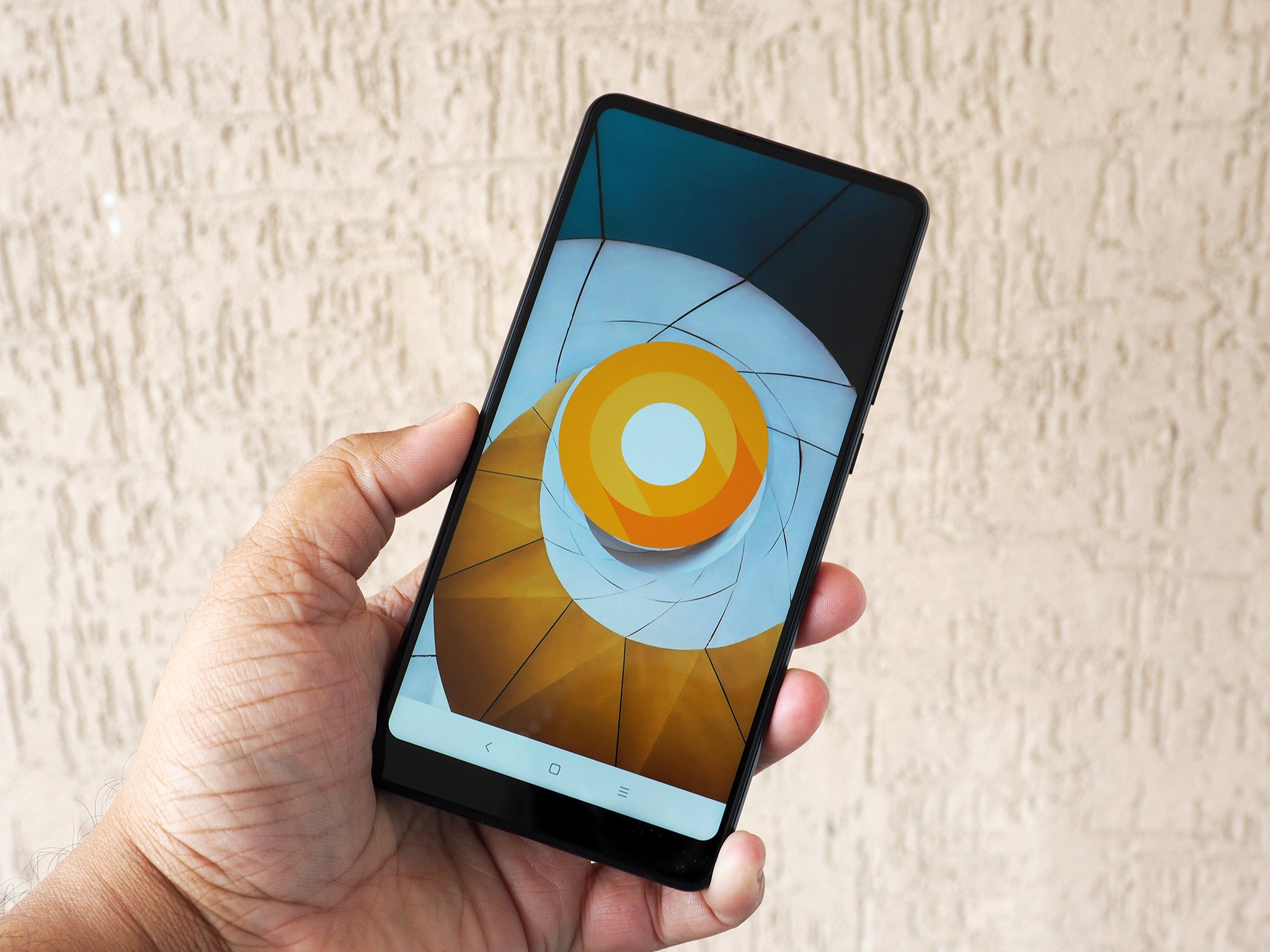
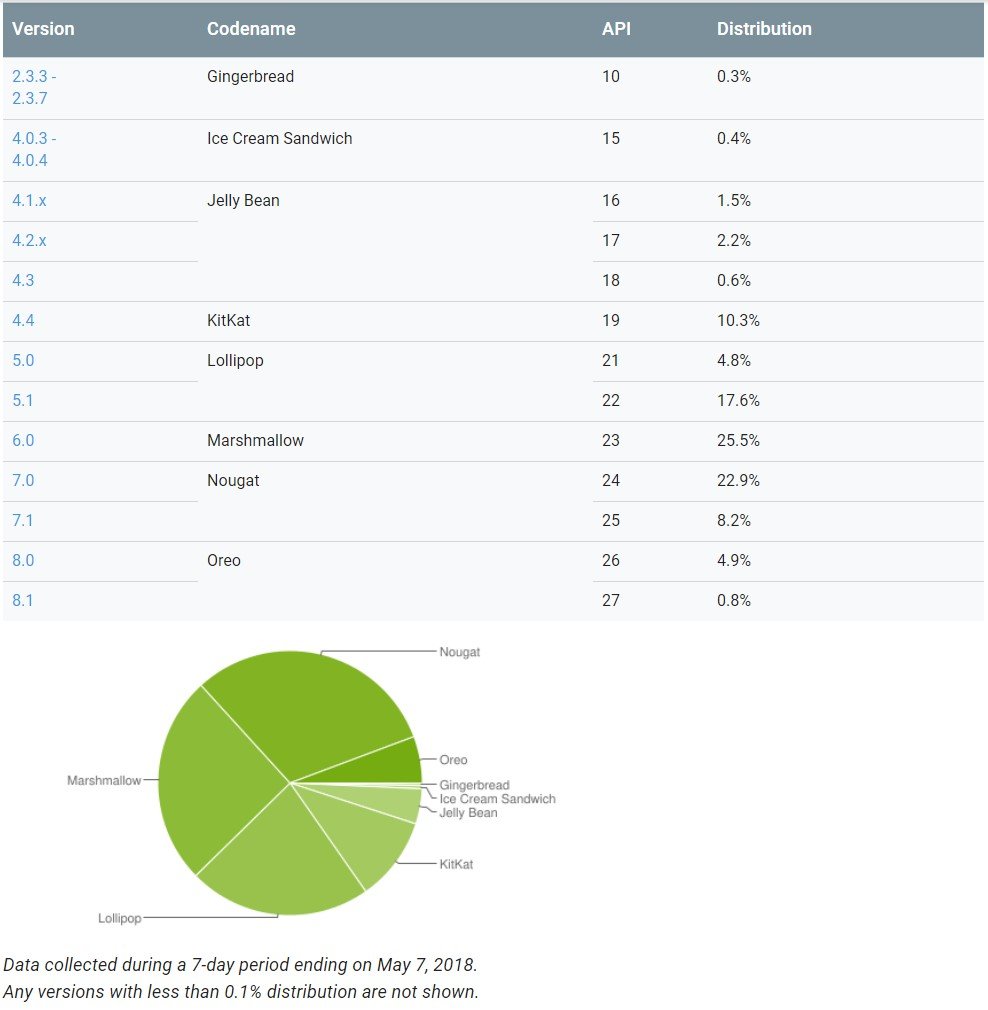
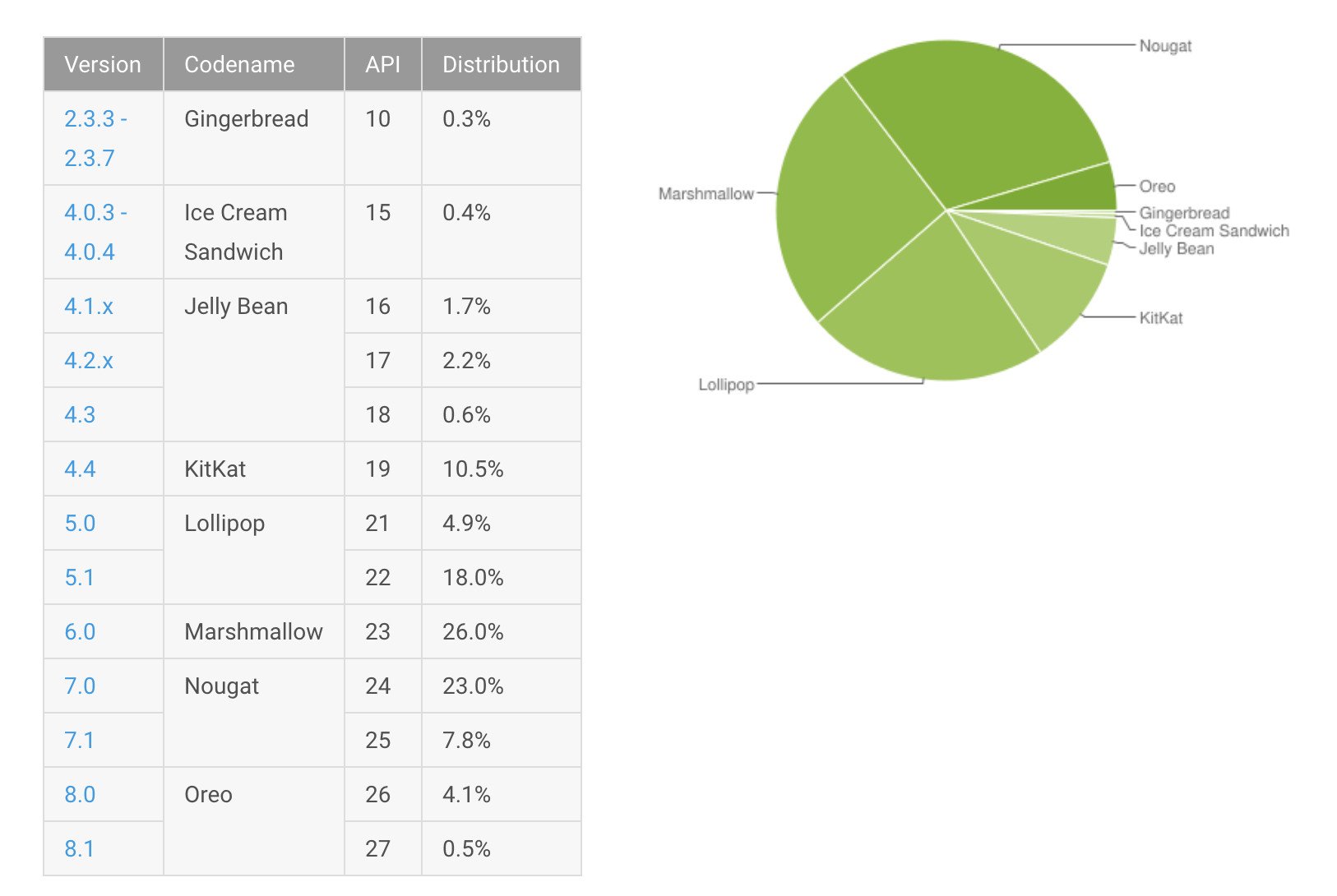
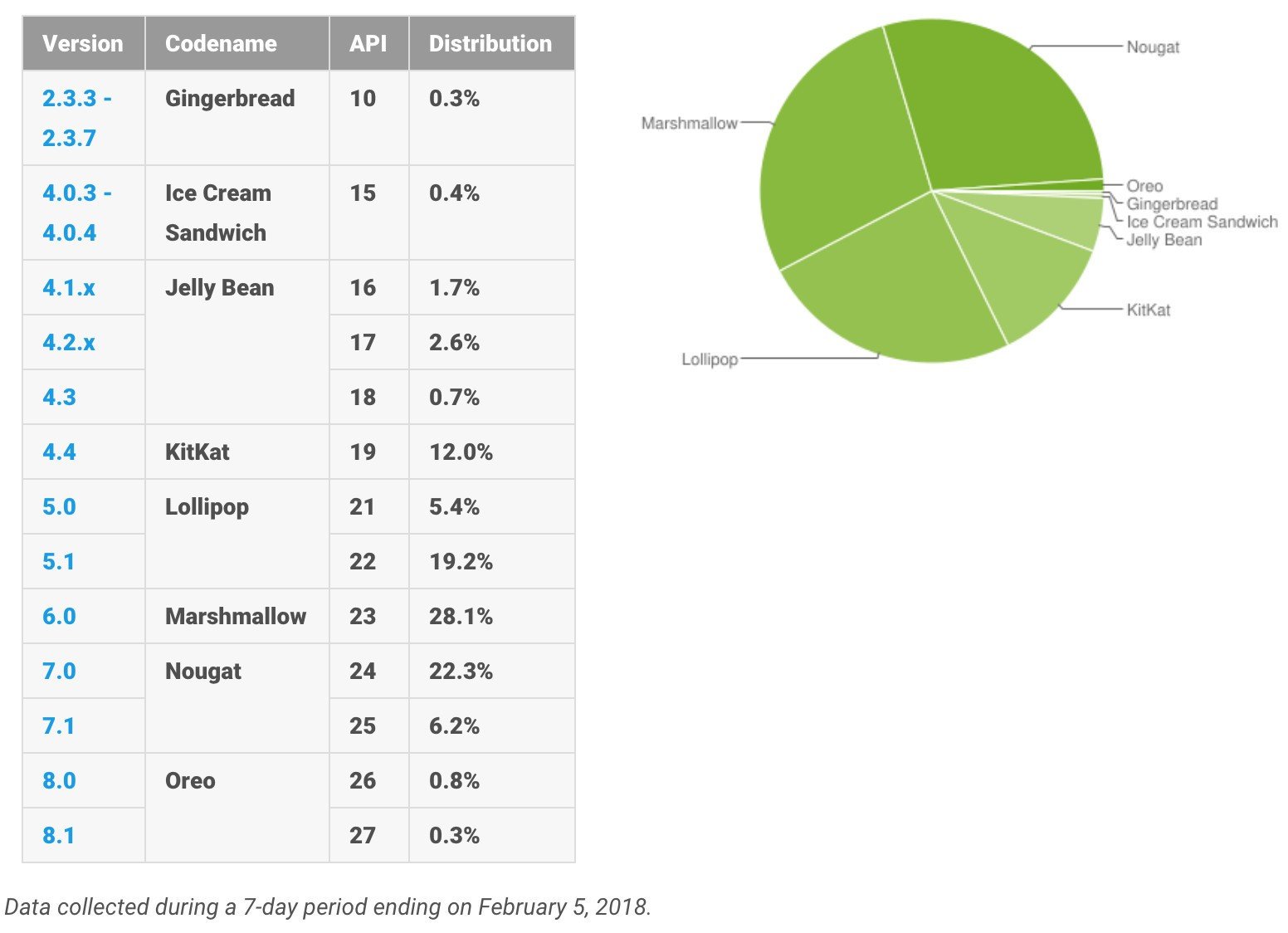
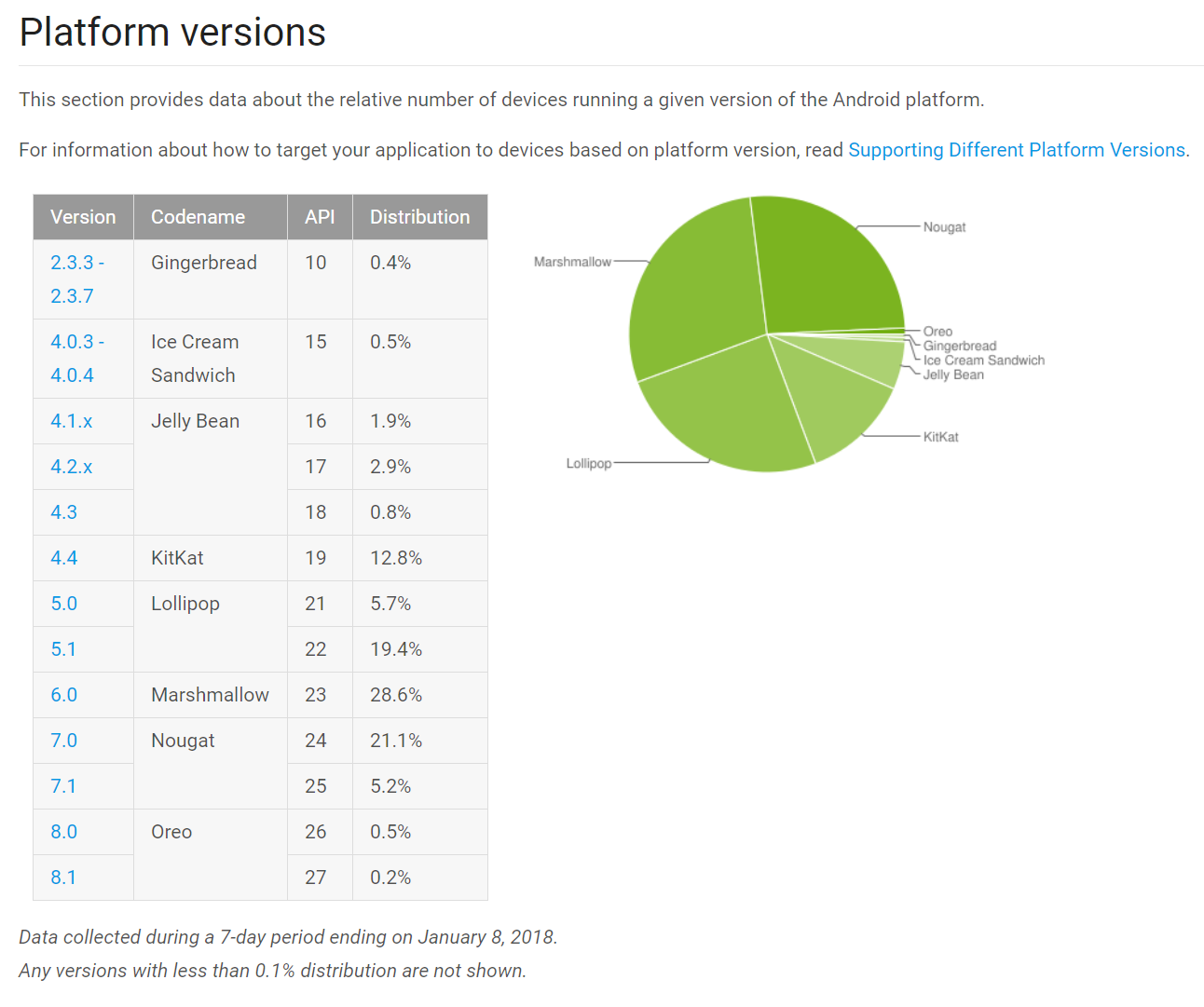
0 Response to "You Can See More: Android distribution numbers: Everything you need to know!"
Post a Comment